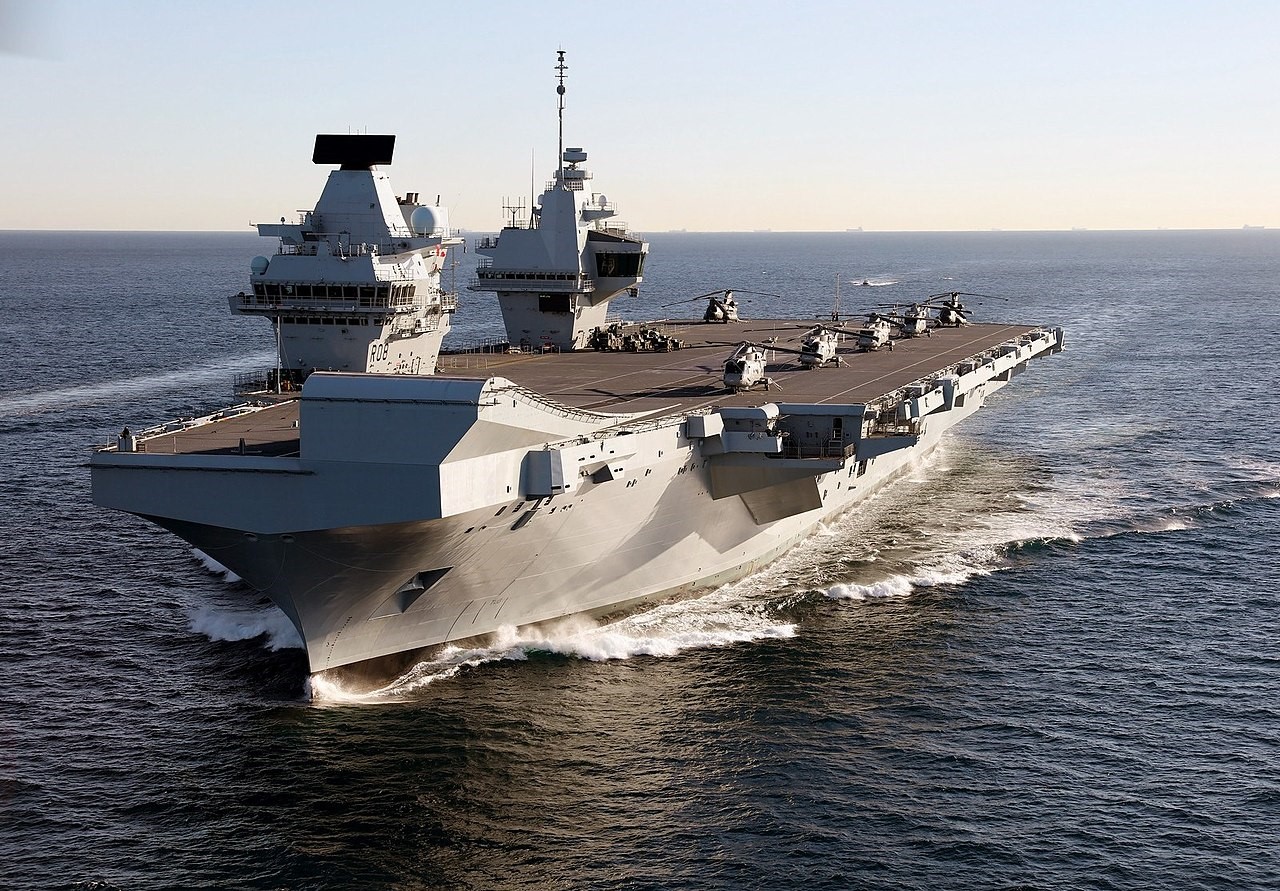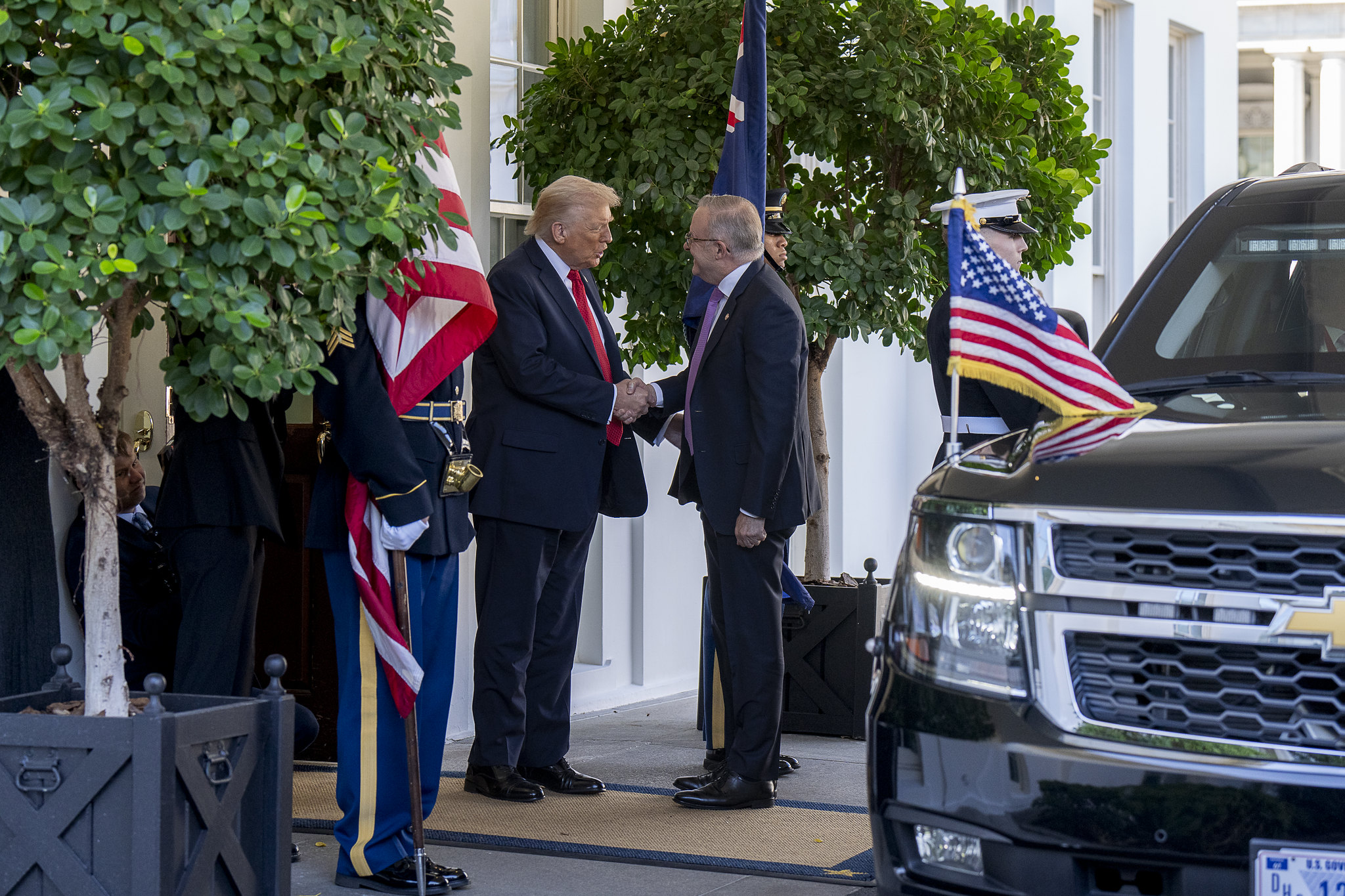Australia’s Slow Naval Expansion in a Rapidly Deteriorating Security Environment
The Albanese government’s much anticipated Review of the Royal Australian Navy’s surface combatant fleet, titled “Enhanced Lethality Surface Combatant Fleet” was released on February 20, 2024. It promises a larger Navy to deal with a worsening strategic outlook. Picture source: Royal Australian Navy, December 1, 2023, X, https://twitter.com/Australian_Navy/status/1730466769288987115.
Prospects & Perspectives No. 18
Australia’s Slow Naval Expansion in a Rapidly Deteriorating Security Environment
By Malcolm Davis
The Fleet Review is a positive step forward in addressing what was a serious capability gap emerging for Australia’s Navy. But this growth in capability will take time, and it may be that time is not a luxury afforded to Australia in the face of increasing regional risks, including the potential for major power competition between China and the United States to slide into a major war over a flashpoint such as the Taiwan Strait, perhaps as early as the second half of this decade. Secondly, the Fleet Review may still lead to a Navy with too few ships and too little firepower to meet serious adversary challenges that are now emerging, particularly given long-range anti-surface warfare (ASuW) systems within China’s military as part of anti-access and area denial (A2AD). Finally, there remains a serious challenge posed by a shrinking workforce to crew a larger Navy which the Fleet Review fails to address, and the planned funding of an additional A$11.1 billion may yet prove to be insufficient, particularly as the military challenge from China continues to grow in coming years. The review may need to be reviewed in the future.
Restructuring for modern times
The Fleet Review, which was undertaken independently by a small team of experts following the 2023 release of the DSR, recognized the need for a larger “surface fleet of warships with greater capability in integrated air and missile defence, multi-domain strike and undersea warfare.” To address this challenge, the Fleet Review structures the future Navy into nine Tier 1 large surface combatants, and 11 Tier 2 smaller ships known as general purpose frigates. The latter will replace the Navy’s eight Anzac class frigates (FFHs) that are approaching the end of their operational lives and lack firepower to be a credible capability in the face of increasingly lethal and long-range adversary anti-surface warfare (ASuW) systems, such as those being deployed by China.
The first three general purpose frigates will be purchased “off the shelf” and remaining eight will be built at Henderson shipyard in Western Australia. Four candidate designs have been suggested in the Fleet Review:
The Japanese Mogami 30FFM frigate
The South Korean Daegu class FFX Batch II and III
The Spanish Navantia ALFA 3000 Frigate
Secondly, as part of Tier 1, the Fleet Review has advocated the acquisition of six “Large Optionally Crewed Surface Vessels” (LOSVs) – each with 32 Vertical Launch System (VLS) cells to provide enhanced multi-domain strike capability in a manner that increases survivability and lethality for Navy at low cost and with lower impact on workforce. These ships are to be based on the US Large Uncrewed Surface Vessel (LUSV) design, and in spite of the designation as “optionally crewed,” Defence Minister Richard Marles has indicated they will be crewed.
Thirdly, the Fleet Review will see Australia’s initial plans to acquire nine Hunter-class Future Frigates reduced to six vessels under SEA 5000 Phase 1, to complement the existing three Hobart-class air warfare destroyers, which will proceed with a planned combat systems upgrade from Baseline 8 to Baseline 9, with that upgrade brought forward. A follow-on replacement for the Hobart class AWDs remains off in the distant future.
The Fleet Review also mentions “minor war vessels” with the most significant development being the reduction in the Arafura-class Offshore Patrol Vessels from 12 to six ships, and their roles constrained to civil duties. Given the virtual absence of armament, this seems appropriate.
Window of vulnerability
In looking at implementation, there are some challenges ahead. Even as the strategic outlook looks set to continue to deteriorate, the pace of Navy’s fleet expansion is not fast enough. The Navy’s fleet size will decrease at a particularly dangerous period, before it gets larger. ASPI’s Bradley Perret notes that “none of the new [general purpose frigates] will arrive before 2029 and we’re not likely to get eight until the mid-2040s,” and that the Anzac class FFHs won’t be getting the proposed “transcap” upgrade that would have given each ship an additional nine years of life. As a result, the fleet will shrink from 12 surface combatants down to nine, potentially eight, in the second half of this decade before it begins to rise early in the next decade. That period from 2028 to 2033 marks a window of vulnerability, right at the time when the risk of a crisis over Taiwan could emerge, if Xi Jinping’s directive to the People’s Liberation Army (PLA) to be ready to undertake a cross-Strait invasion by 2027 is realized.
Certainly, acquiring new warships, as with any complex military system, takes time, but the Fleet Review’s approach will see increased vulnerability at the worst possible time, as regional tensions mount. And the issue of whether a fleet of even twenty warships – the end state of the review – is sufficient needs to be considered. Its notable in particular that the Fleet Review skirts around the opportunities offered by uncrewed autonomous systems at sea to dramatically boost distributed lethality. The LOSVs are a step in the right direction, but government has retreated from a more ambitious vision for unmanned surface vessels (USVs) such as what is being demonstrated with the U.S. Navy’s Sea Hunter USV. That caution needs to be challenged as the Navy needs greater capability for ISR, ASW and ASuW as well as land attack that is inherent in distributed lethality quickly. The LOSVs only have 32 VLS cells, whilst the general-purpose frigates will only have 16 VLS cells. Australia’s navy still looks under-gunned particularly as China builds large numbers of advanced, heavily armed warships, with the Type 055 Renhai cruiser packing 128 cells! The opportunity to consider an arsenal ship for the Australian Navy, unfortunately, is missing.
Force multiplier
Much focus is on the role of the nuclear powered, but conventionally armed, submarines (SSNs) to be acquired under Pillar 1 of AUKUS as a force multiplier. Once Australia starts acquiring the Virginia class SSNs in the 2030s, ironically at much the same time as the Fleet Review starts delivering real capability enhancements, then the Australian Navy’s operational strength really starts to grow.
The potential for the SSNs as apex predators of the oceans to coordinate with more advanced naval surface combatants emerging from the Fleet Review will enhance Australia’s ability to undertake deterrence by denial within its area of primary military interest. The risk is that that boost in capability will come too late to meet the challenges that are clearly looming on the horizon over increasingly stormy seas.
(Malcolm Davis is Senior Analyst, Australian Strategic Policy Institute.)














